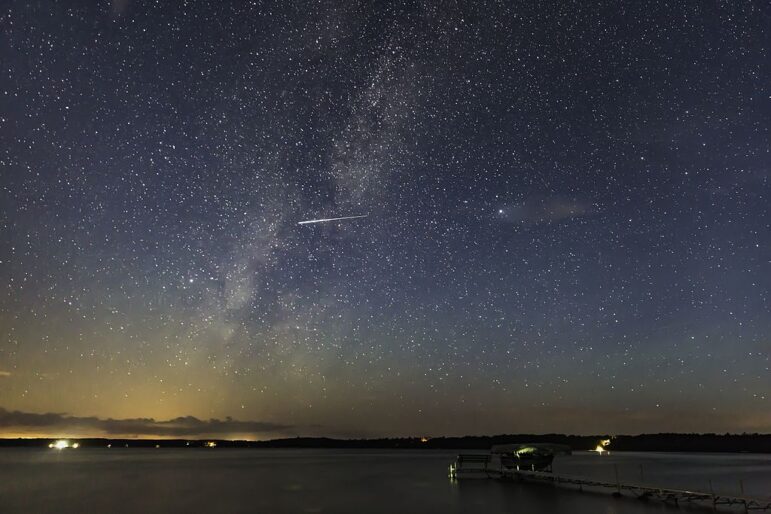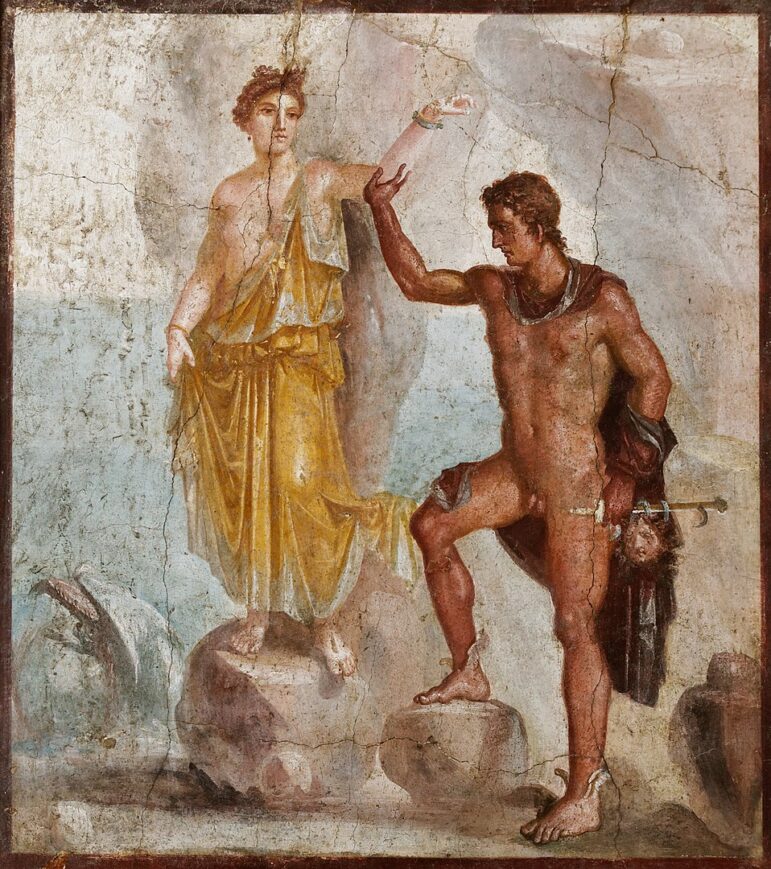TWH – The Perseid meteor shower season begins tonightBringing thrilling flashes of light to the night sky, the season lasts from July through August and ends on September 1st.
The best nights to see meteors are in mid-August, the 11th, 12th, and 13th to be exact. This is a lucky coincidence, because, at least in the Northern Hemisphere, the moon sets just before midnight. Jamie Carter ForbesThis timing means that the majority of the night will be dark and there will be no moonlight – perfect for observing the meteor shower, and considering the phases of the moon aren’t always cooperative, this is one of the best times of the year to head out in search of dark skies.

Perseid meteor shower and Milky Way over Big Sand Lake in northern Minnesota [Lorie Shaull, Wikimedia Commons, CC 4.0]
The Perseid meteor shower is an annual phenomenon that occurs when the orbit of Comet Swift-Tuttle, which orbits the Sun every 133 years, crosses Earth’s orbit. As Earth passes through the comet’s tail, particles captured in the atmosphere burn up, creating a brilliant flash of light in the sky. Comet Swift-Tuttle itself has been spotted in the sky in the 1860s and 1990s, and will next appear again in 2126, about a century from now.
The Perseid meteor shower gets its name because it appears to come from the direction of the constellation Perseus, the Greek hero, son of Danae and Zeus, who defeated Medusa and the whale. The skies around this constellation are filled with other characters from the Perseid myth, including Princess Andromeda, whom Perseus saved from the whale, Perseus’ winged horse Pegasus, and Andromeda’s parents Cepheus and Cassiopeia. The name “Perseid” means “son of Perseus.”

Perseus and Andromeda in a 1st century AD fresco in the National Archaeological Museum of Naples [public domain]
The Perseid meteor shower is also found in non-pagan mythology.Tears of St. Lawrence“, Named after a Catholic saint Not only does it protect you from fire, it also ensures a successful barbecue (tradition holds that St. Lawrence was martyred by being grilled, though historically this is unlikely to have happened).
In addition to the Perseids, several other meteor showers will appear in July and August, including the Capricornids, Delta Aquarids, Piscis Austrinus, Alpha Capricornids, Iota Aquarids, and Kappa Cygnids. according to Space.com. While none of these meteor showers are as extensive as the Perseids, they add to the light show in the sky and produce meteors of a wide range of colors and speeds.
The best time to watch for meteors is early in the morning before dawn. This is because for a few hours just after sunset, we are still behind the Earth and most potential meteors are not fast enough to catch up with the Earth. But after midnight, the Northern Hemisphere is ahead of the Earth and any particle in our path will become a meteor.
How many meteors can we expect to see near the peak? Carter says 50 would be “a great result,” but EarthSky reports that in conditions like this year’s, we could see many more, possibly even 90 or more. Either way, it’ll be an amazing sight.


